1. O.J. Simpson Car Chase (Jun. 17, 1994)

On June 17, 1994, the nation watched in disbelief as former football star O.J. Simpson led police on a low-speed pursuit through Los Angeles in a white Ford Bronco, with friend Al Cowlings at the wheel. Broadcast live by every major network, the surreal spectacle interrupted the NBA Finals, soaps, and news, turning highways into the stage for a national obsession. Helicopters tracked every move as millions witnessed the bizarre mix of celebrity, crime, and suspense unfold in real time. The chase became a defining media moment of the ’90s, showing how live TV could transform a legal case into must-watch drama. It signaled the dawn of wall-to-wall sensationalist coverage—and America couldn’t look away.
2. Challenger Disaster (Jan. 28, 1986)
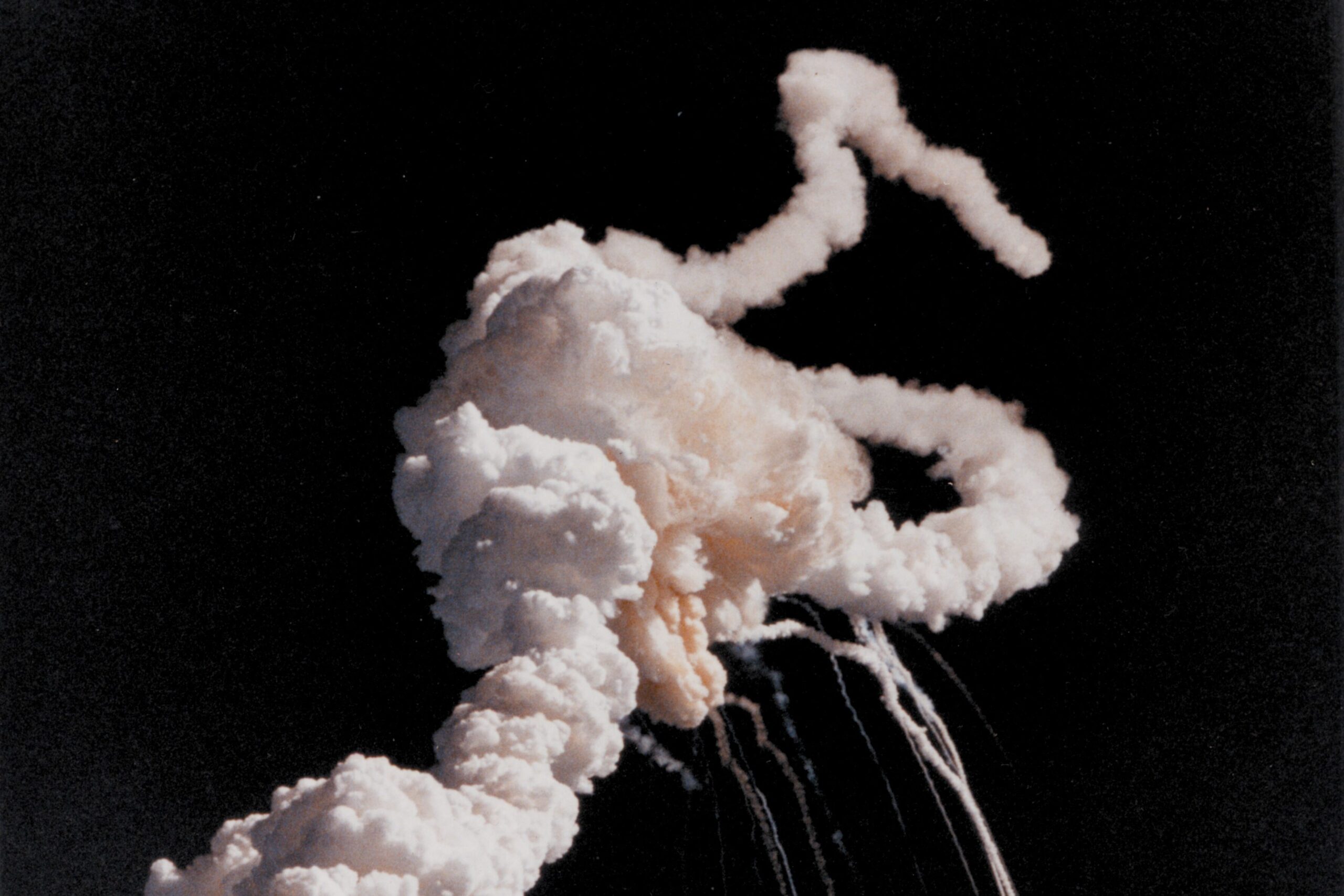
On January 28, 1986, the Space Shuttle Challenger exploded just 73 seconds after liftoff, broadcasting live across networks as millions, including countless schoolchildren, watched. The launch had been televised from the moment of ignition; when the shuttle broke apart, that catastrophic moment was transmitted in full, creating wide‑scale horror and grief on live television. The tragedy changed how live broadcasts approached dangerous or high‑risk events. Networks reevaluated delay protocols, censorship options, and psychological support for on‑air presenters. The shared experience of watching hope turn into disaster in real time united viewers in mourning and marked a turning point for how television balanced real‑time coverage with sensitivity to human loss.
3. Cronkite Announces JFK’s Death (Nov. 22, 1963)

On November 22, 1963, Walter Cronkite, the trusted anchor of CBS Evening News, announced President John F. Kennedy’s death with visible emotion: he paused, removed his glasses, looked away, and struggled to maintain composure as he delivered the news. At 2:38 p.m. EST, Cronkite spoke the words that confirmed the nation’s worst fears, with his voice breaking and eyes welling up, signaling the gravity of the moment to millions watching across America.
That emotional broadcast became a defining moment in journalism. Cronkite had been standing over the wire machine, piecing together bulletins from Dallas, and chose to announce the death only after official confirmation, modeling journalistic restraint and integrity. His reaction humanized the newsroom, forging a deep emotional connection with viewers and marking a turning point when television news began to play a central role in shaping national consciousness.
4. Hurricane Andrew (Aug. 24, 1992)
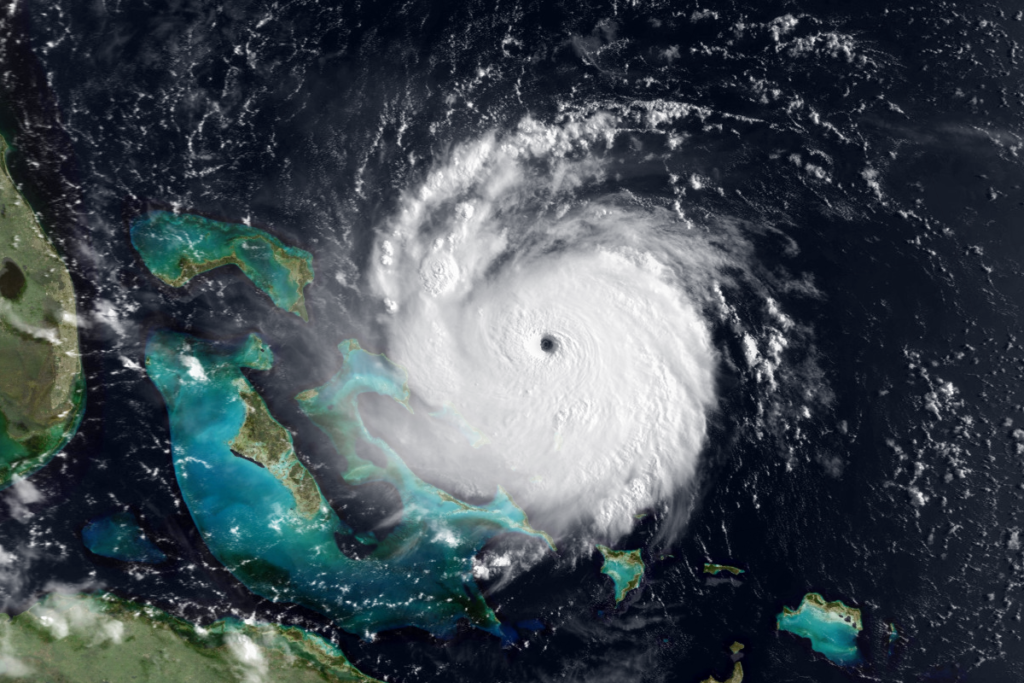
On August 24, 1992, Hurricane Andrew, a Category 5 storm, made landfall near Homestead, Florida, with winds exceeding 165 mph, leaving behind 25,500 homes destroyed, hundreds of thousands displaced, and over $25 billion in damage, making it the costliest U.S. hurricane at the time. Local news crews in Miami-Dade broadcast live through blowing debris and power outages, delivering updates amid falling transmissions and collapsing towers under duress. Viewers watched raw footage of uprooted neighborhoods, flooded streets, and shattered infrastructure. The visual intensity and personal risk taken by reporters forged a connection between audiences and the human toll of disasters. Andrew redefined extreme‑weather coverage: it proved that live reporting amidst chaos could inform, mobilize relief efforts, and bring distant viewers into the disaster zone almost in person.
5. Princess Diana Funeral (Sept. 6, 1997)

On September 6, 1997, the funeral of Princess Diana was broadcast live worldwide. NBC, BBC, and other networks carried real‑time images of the funeral cortege at Westminster Abbey, the sea of mourners, and the poignant silence as Diana’s coffin passed by, unifying viewers in grief and awe across continents. This broadcast was deeply symbolic: live coverage captured not just protocol but catharsis. As the world watched, viewers saw how public rituals could channel emotion and solidarity. The funeral illustrated television’s role in creating global, instantaneous empathy, a powerful reminder that live moments can transcend borders through shared experience.
6. Oklahoma City Bombing (Apr. 19, 1995)

At 9:02 a.m. CDT on April 19, 1995, a truck bomb exploded outside the Alfred P. Murrah Federal Building in Oklahoma City. The blast killed 168 people, including 19 children, injured 648, and destroyed a large portion of downtown Oklahoma City, marking it the deadliest act of domestic terrorism in U.S. history. Within minutes, news teams were live on scene, relaying the carnage and human suffering in near real time. National networks hooked into KFOR-TV’s local feed; anchors and reporters provided immediate updates while emergency responders arrived. Nearly 90 minutes after the blast, footage, photographs, and audio from journalists who rushed into the rubble were broadcast to millions, capturing survivors being rescued and stunned bystanders. The visual coverage and emotional immediacy shaped public awareness of domestic terrorism and drove nationwide demands for enhanced building security and government transparency.
7. Reagan Assassination Attempt (Mar. 30, 1981)
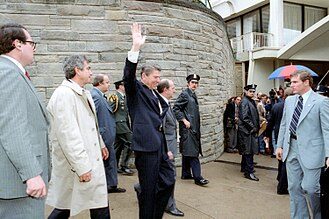
On March 30, 1981, during a press event outside the Washington Hilton Hotel, President Ronald Reagan was shot by an assassin. Live TV coverage captured the chaotic aftermath: Secret Service agents rushing the president into a vehicle, medical personnel tending to Vice President Bush, and news anchors scrambling to explain what was unfolding. Across the country, audiences watched with mounting alarm as details emerged in real time.
The live coverage revealed television’s raw immediacy, and its power to convey crisis under pressure. Networks suspended regular programming, fielded correspondents on the ground, and provided minute‑by‑minute updates. This event established a new expectation: television would carry you through historic emergencies as they happen, and eyewitness accountability would arrive with each transmission.
8. Rodney King Beating (Started Mar. 3, 1991), LA Riots and Trial
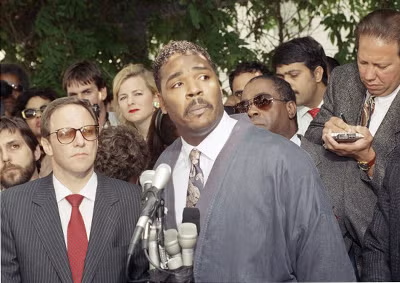
On March 3, 1991, Rodney King, a Black motorist, was brutally beaten by LAPD officers during an arrest, and the beating, captured by a nearby resident’s camcorder, was broadcast repeatedly across U.S. news networks. Viewers saw the violent unfolding and raw aftermath: bloodied wounds, stunned silence, and King himself pleading, “Can we all get along?” moments before riots erupted in Los Angeles over the acquittal of officers. This footage changed everything. The raw, unedited visual evidence introduced police brutality into public discourse in a way words alone never could. It sparked national outrage, influenced public opinion, and ignited systemic discussion on race, justice, and law enforcement. The event also led to the 1992 Los Angeles riots following the officers’ acquittal in the state trial. Televised video became a powerful tool for accountability, marking a new era in which citizen-recorded media could shift the national narrative.
9. Ted Bundy Execution (Jan. 24, 1989)
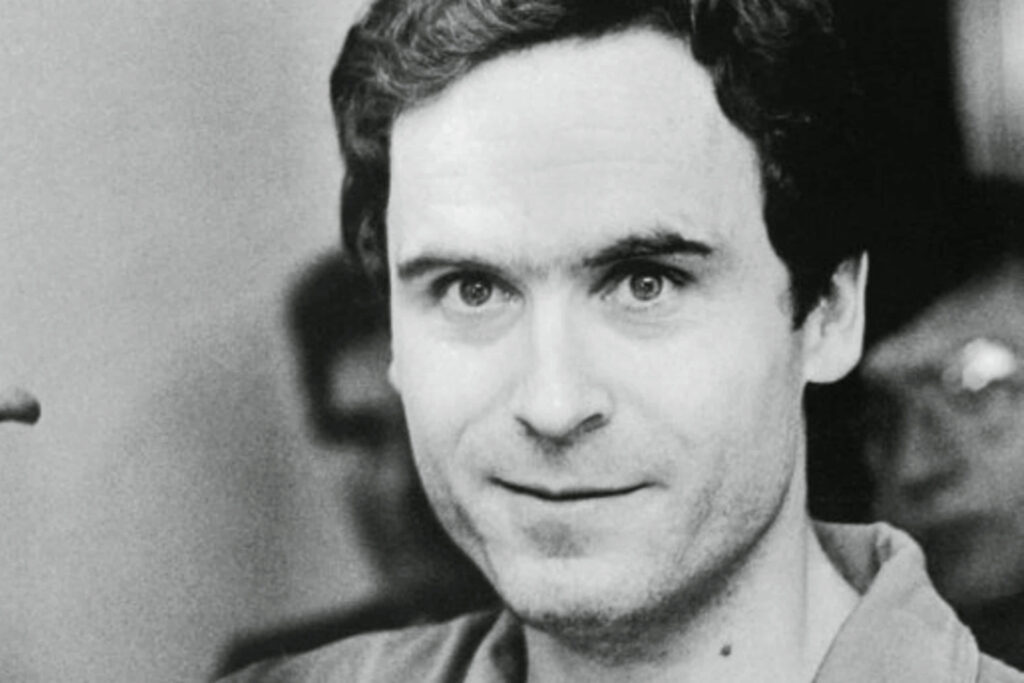
On January 24, 1989, the execution of notorious serial killer Ted Bundy was covered extensively by stations like ABC, which interrupted normal programming with live news updates about the final moments at Florida State Prison, including the declaration at approximately 7:16 a.m. that Bundy was dead by electrocution. The public broadcast of the ending to a criminal saga provoked strong reactions. Americans saw the culmination of widespread reporting and trial coverage that had spanned years. Crowds outside the prison even celebrated when the execution was confirmed. The event underscored television’s access to the ultimate dramatic moment, and showed how live coverage can deliver closure even in circumstances as grim and controversial as the death of a high-profile figure.
10. Berlin Wall Falls (Nov. 9, 1989)
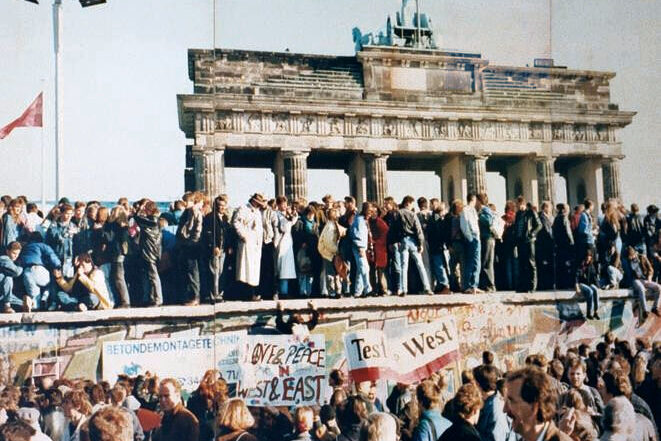
On November 9, 1989, the historic fall of the Berlin Wall was captured live by broadcasters like NBC, with anchor Tom Brokaw reporting from the Brandenburg Gate as East Germans streamed into West Berlin. Americans saw crystal-clear footage of reunions, celebrations, and the literal tearing down of symbolic barriers, and heard live testimonies from East Berliners granted newfound freedom. The live coverage transformed a distant geopolitical shift into an emotional, human story. As the images played out on nightly news, Americans grasped the scale of change: a divided continent was healing before their eyes. This broadcast reinforced the role of television as a global connector, bringing distant historical moments into everyday life with immediacy and emotional impact.
11. Baby Jessica Rescue (Oct. 14–16, 1987)
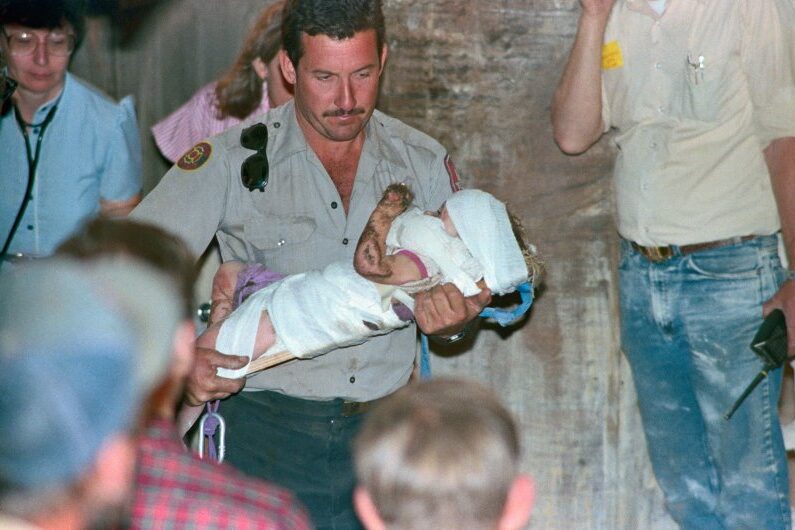
On October 14–16, 1987, 18‑month‑old Jessica McClure fell 22 feet down a narrow abandoned well in Midland, Texas, and was trapped for nearly 58 hours. The dramatic rescue was broadcast live and dominated headlines, rescuers dug painstaking tunnels around the casing, while national TV stations interrupted regular programming to show updates from the scene, capturing the nation’s collective anxiety and hope. The live coverage turned the story into a symbol of community, compassion, and perseverance, verbal updates and images of drilling teams, family members waiting anxiously, and finally Jessica’s emergence riveted millions. People across the country watched and waited, united in relief when she was pulled free. The event left a lasting mark on public consciousness, influencing future live event broadcasting and inspiring a made-for-TV movie just two years later.
12. John Lennon’s Death (Dec. 8, 1980)

In December 1980, legendary musician John Lennon was shot and killed in New York. The news broke unexpectedly during a live broadcast of Monday Night Football, when anchor Howard Cosell paused the game and announced Lennon’s death directly to an audience of football fans. His calm but stunned delivery sent shockwaves across America as the nation processed the loss of a cultural icon in real time. Cosell’s decision to interrupt a sports broadcast underscored the role of journalists as truth‑tellers above all, even during entertainment programming. It blurred the lines between news and non‑news, showing viewers that no moment was off limits when delivering major events. Millions of viewers experienced the tragedy together in a moment of shared unexpected grief.
13. Desert Storm Begins (Jan. 17, 1991)
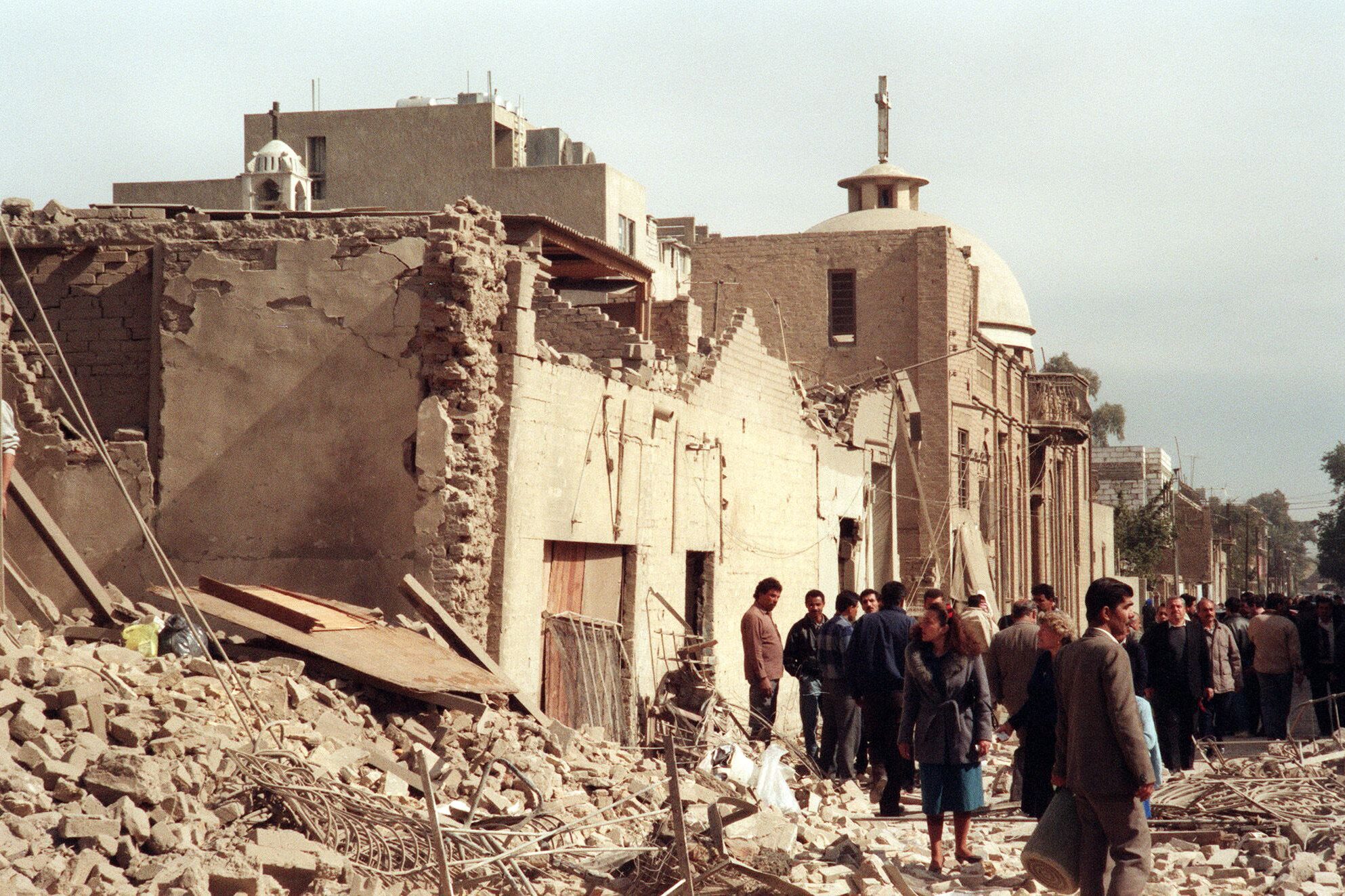
On January 17, 1991, the U.S. and coalition forces launched Operation Desert Storm against Iraq, and CNN became the first to broadcast sustained live war coverage, showing real-time footage of bombing in Baghdad as it unfolded. The spectacle of “shock and awe” was streamed directly to U.S. living rooms, newscasters narrated strike after strike amid live video feeds from the Middle East. This marked a turning point in war journalism. Continuous live coverage meant audiences didn’t just hear updates, they experienced war in almost real time. CNN’s coverage set the template for the 24-hour news cycle and shifted expectations: Americans came to expect immediate, vivid reporting during crises, fueling changes in how wars would be covered in media thereafter.
14. Iran Hostage Crisis Coverage (Nov. 1979–Jan. 1981)
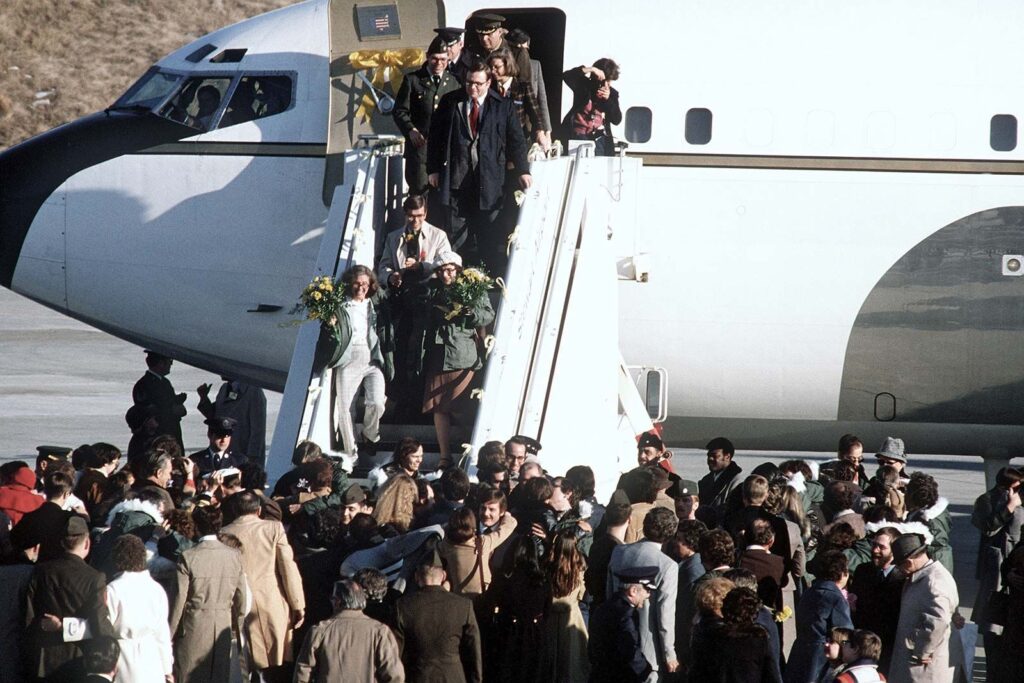
Starting November 8, 1979, ABC launched nightly specials titled The Iran Crisis, America Held Hostage to report the seizure of 52 Americans at the U.S. Embassy in Tehran. The coverage began just days after the crisis began, delivering live alerts, diplomatic context, and on‑scene updates from Tehran. Viewers tuned in nightly as the ordeal stretched into months, demanding continuous media presence. As the crisis entered its second week, Ted Koppel took over as on‑air host, and the program evolved into Nightline by March 1980. Over the next 444 days, millions watched detailed reporting, emotional interviews, and countdown graphics showing each passing day of captivity. This prolonged, focused coverage fundamentally changed how television news handled crises and propelled Koppel to national prominence
15. Nixon Resigns (Aug. 8, 1974)
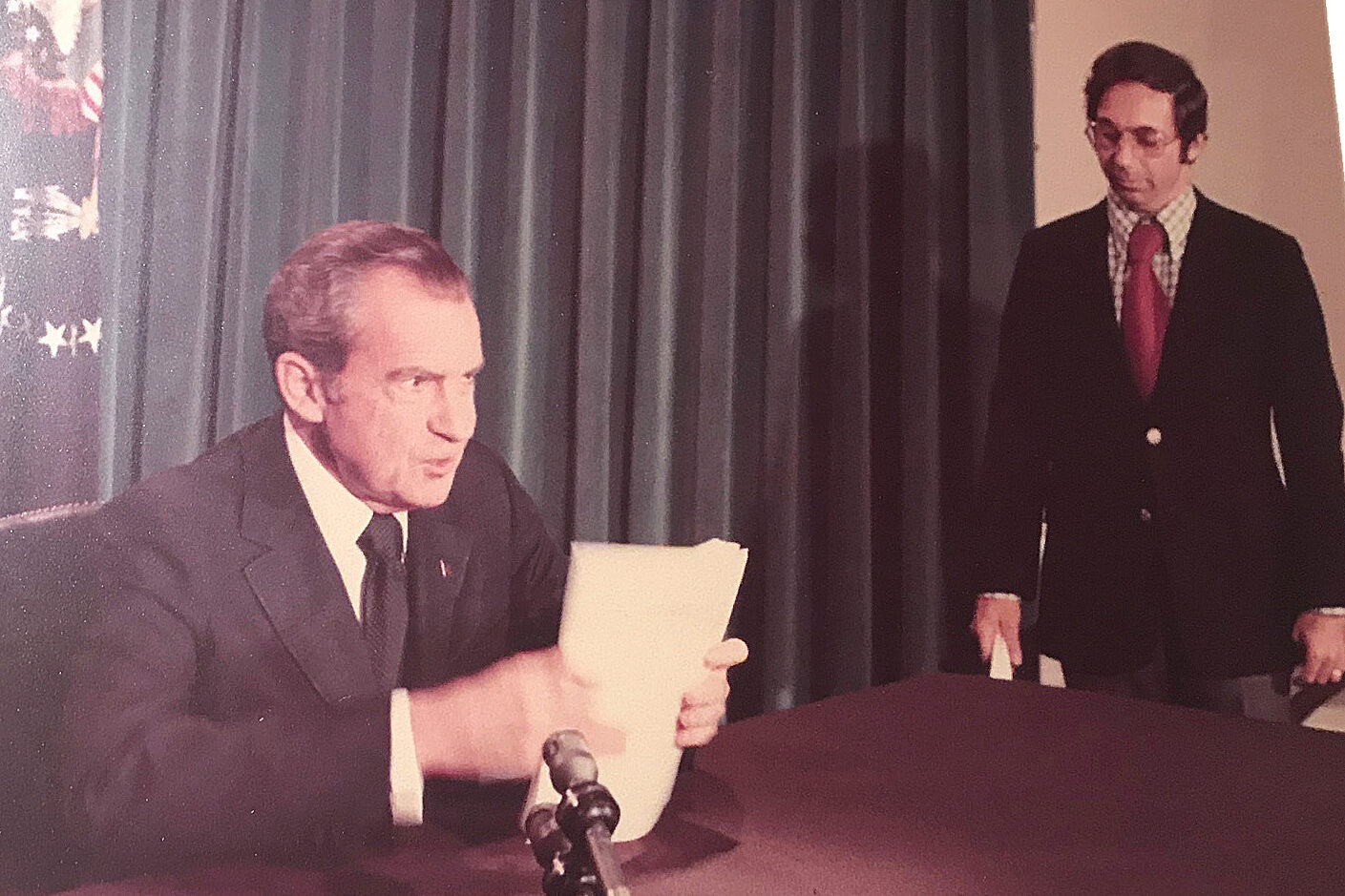
On August 8, 1974, President Richard Nixon delivered a solemn resignation speech live on television, becoming the first U.S. president to leave office under such circumstances. His address aired across all major networks, as an audible hush reverberated through living rooms nationwide: “I shall resign the presidency effective at noon tomorrow.” The broadcast was somber, historic, and emotionally weighty. The following day, on August 9, Vice President Gerald Ford took the oath live on network TV. For many Americans, this sequence marked a loss of innocence: trust in leadership had eroded, and television had literally chronicled the transition. Nixon’s resignation underscored TV’s power to deliver instantaneous historic events, while reinforcing the idea that broadcast news was central to democracy, informing citizens of their leaders’ fates in real time.
16. Watergate Hearings (1973)
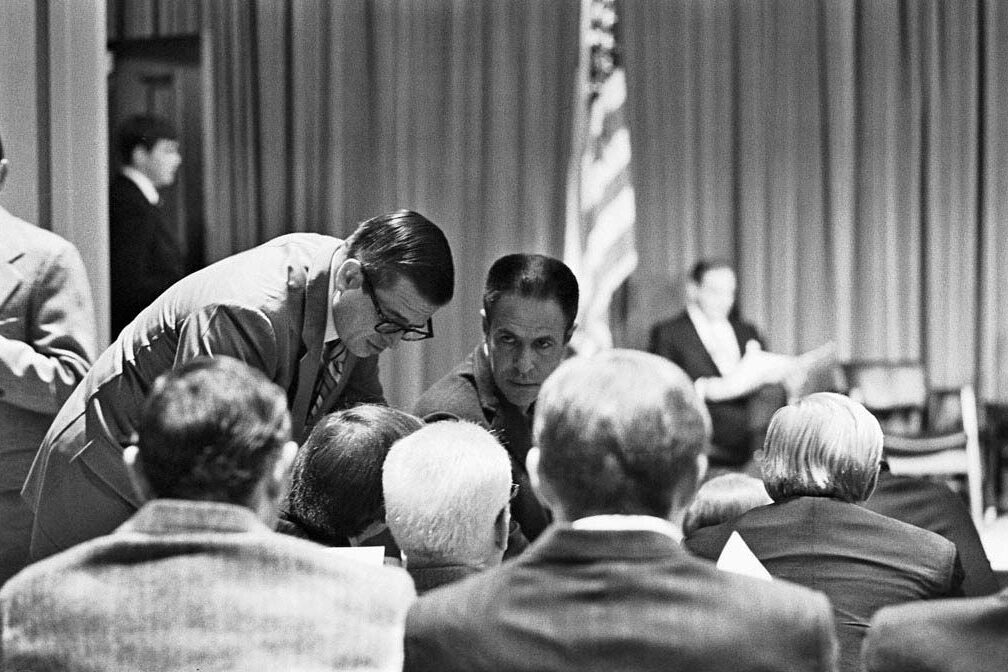
In 1973, congressional hearings on the Watergate scandal were broadcast live in full across major networks, allowing Americans to witness politicians, aides, and journalists in real time as evidence unfolded. The broadcasts ran for hours daily, transforming what might have been a niche political drama into a nationwide televised spectacle and fueling public distrust in government. Gavel-to-gavel coverage made the hearings must-watch TV and set a model for transparency in political journalism.
Viewers saw fragments of tape, listened to testimonies, and heard the words “I am not a crook”, President Nixon’s infamous denial, in the broader context of mounting revelations. The hours-long sessions aired with almost no editing, offering raw glimpses into corruption and cover-ups. The hearings played a pivotal role in keeping Watergate in the public eye and accelerating the eventual resignation of Nixon, ultimately reshaping public expectations for media to fully chronicle political accountability.
17. Vietnam War Nightly News (mid‑1960s–1970s)
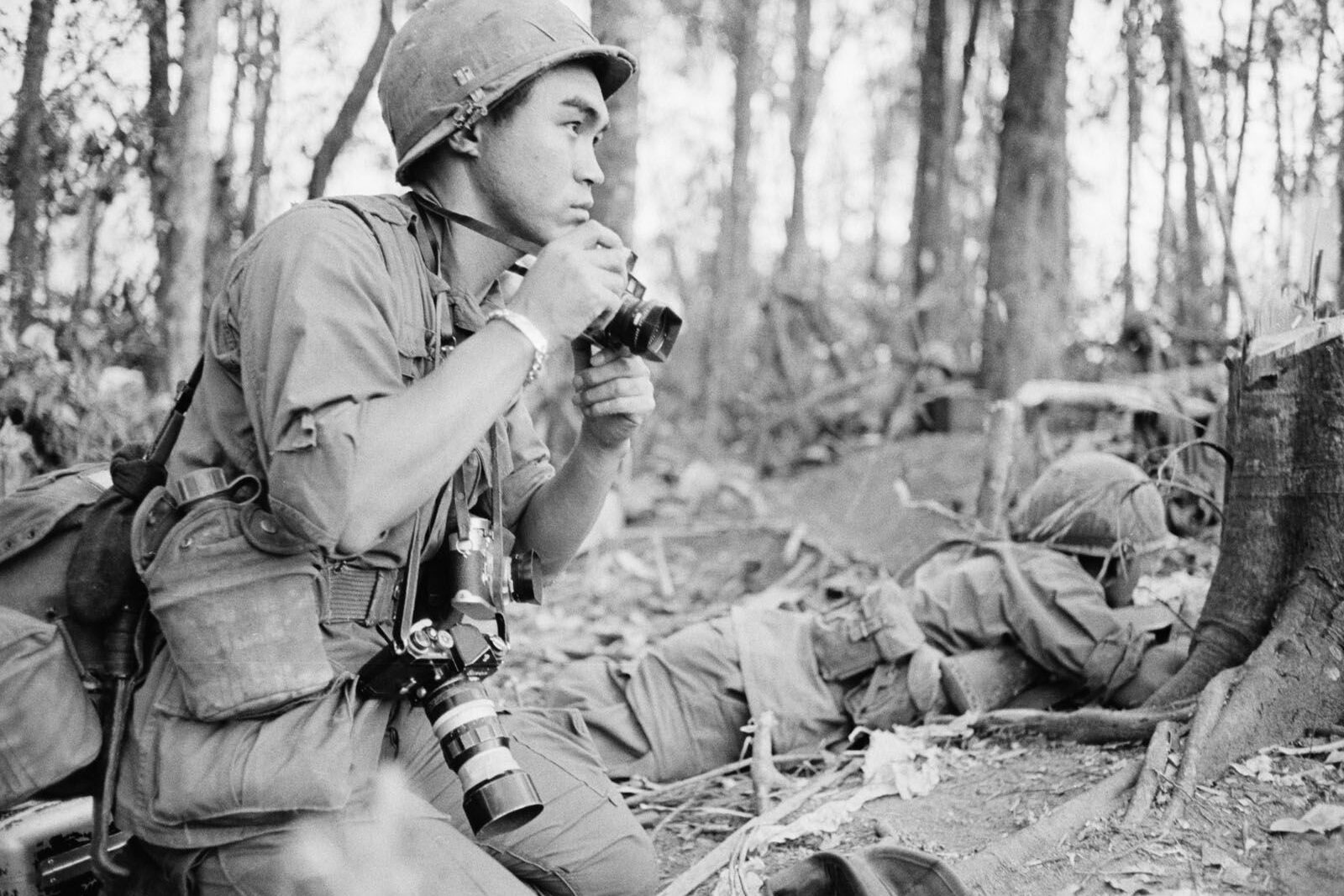
Throughout the Vietnam War (1965–1973), nightly television news brought combat images, bombings, wounded soldiers, civilians, into American living rooms in unprecedented detail. Instead of filtered official statements, glimpses of reality arrived through war-zone footage, often same-day or overnight, in what became known as the “living-room war”. This immersion proved powerful: as people watched body counts and tragedies nightly, it fostered deep emotional engagement and moral questioning about U.S. involvement.
Although later scholarship challenges the notion that television reporting directly caused a shift in public opinion, it’s undisputed that night after night of grim visuals eroded support for the war by illustrating its cost and chaos. CBS correspondent John Laurence and others documented battlefront realities with bravery and intimacy, giving faces to the conflict and making remote wars feel personal.
18. Kent State Shootings (May 4, 1970)

On May 4, 1970, Ohio National Guard troops fired into a crowd of unarmed students protesting the Vietnam War at Kent State University, killing four and wounding nine during a 13‑second volley of 61–67 shots. Dramatic footage of the incident aired extensively on national news, quickly becoming a symbol of violent state suppression of dissent. The coverage spurred an immediate national response: about 4 million students across 800 U.S. campuses walked out in protest, leading to widespread institutional closures. Televised images transformed Kent State from a local campus incident into a defining moment in civil rights and anti-war activism. Viewers saw grieving students, tense confrontations, and the human cost of escalation in real time. The image-driven coverage provided a visceral sense of betrayal: Americans saw their own government turn rifles on youth demanding change.
19. Apollo 11 Moon Landing (Jul. 20, 1969)
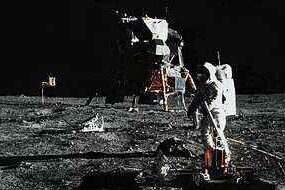
On July 20, 1969, Apollo 11’s lunar module touched down and Neil Armstrong’s first steps on the Moon were broadcast live to an estimated 600–650 million viewers worldwide, about one‑sixth of humanity at the time. In the U.S., 94 percent of TV‑owning households tuned in, making it the most‑watched television event in history. Audiences gathered in parks, stores, or living rooms, sharing a collective sense of awe that transcended national boundaries. The broadcast demanded vast technical innovation. NASA and Westinghouse created a slow‑scan TV camera able to survive extreme lunar temperatures and relay signals across 250,000 miles, converted at three Earth stations in real time for distribution via satellite to global networks. The imagery was grainy and low‑frame‑rate, yet its rawness made the experience feel authentic and intimate, television no longer just reported history; it became history. Networks like CBS, NBC and ABC devoted hours of coverage, shifting news broadcasting toward continuous live events.
20. Robert F. Kennedy Shot (Jun. 5, 1968)

On June 5–6, 1968, just after midnight in Los Angeles, Robert F. Kennedy was shot while celebrating his California primary win. As cameras rolled, networks quickly interrupted regular programming with shaky, live footage from the hotel, broadcasting the chaos and confusion in real time. Viewers watched as Kennedy was rushed to an ambulance amid stunned onlookers and frantic staff. This emergent, on-scene coverage marked another turning point for live news. The immediacy of the visuals, sirens, crowds, confusion, gave people a sense of witnessing history as it happened. Overnight, the live footage became iconic: broadcasters realized that being first mattered, but being on the ground mattered more. News was no longer just reported; it was lived by millions through their screens.
21. Martin Luther King Jr. Assassination (Apr. 4, 1968)
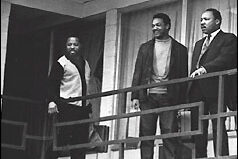
On April 4, 1968, when Martin Luther King Jr. was assassinated in Memphis, television networks immediately cut into programming with extensive live coverage. As images of stunned crowds, candlelight vigils, and grief-stricken communities aired, viewers across America tuned in to witness national sorrow and unfolding protests. The combination of raw visuals and emotional context made the broadcast feel urgent and deeply personal. This coverage shaped public opinion by bringing the civil rights struggle into living rooms everywhere. In cities nationwide, protests erupted, and TV’s coverage highlighted both sorrow and outrage. The assassination coverage did more than report a death, it illuminated systemic racism and told a story of a movement’s profound loss, further galvanizing civil rights momentum through shared experience.
22. Beatles on Ed Sullivan (Feb. 9, 1964)
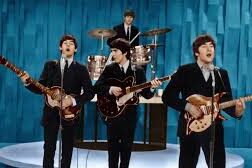
On February 9, 1964, The Beatles made their U.S. television debut on The Ed Sullivan Show, watched by over 70 million Americans, about 40 percent of the entire U.S. population at the time. This appearance helped launch “Beatlemania” in the U.S., turning the British band into a cultural phenomenon overnight. Audiences tuned into their energetic live performance, the style, the charisma, it all felt electric and historic. While not breaking news, the impact was undeniable: it shifted American pop culture and television programming alike. TV networks began chasing similar events, live performances, sensational spectacles, and advertisers quickly moved to capitalize on the youth audience. The Beatles on Sullivan demonstrated that television could not only inform but also unite and ignite cultural movements in an instant.
23. Oswald Shot on Live TV (Nov. 24, 1963)
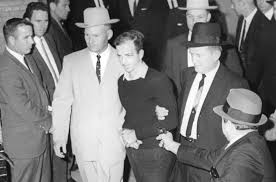
On November 24, 1963, nightclub owner Jack Ruby shot Lee Harvey Oswald, the man accused of killing President Kennedy, live on national television, in the basement of the Dallas Police Headquarters. Cameras were already rolling to film Oswald’s transfer between jails when Ruby stepped into the frame, fired a point‑blank shot, and changed the face of televised news forever. This marked the first known instance of a human being killed live on U.S. television, and it left a nation rattled, witnessing violence unfold in real time for the first time.
This story, https://dailyfetch.net/23-live-tv-moments-that-shocked-moved-or-united-the-nation/ was first featured on DailyFetch in July 2025


